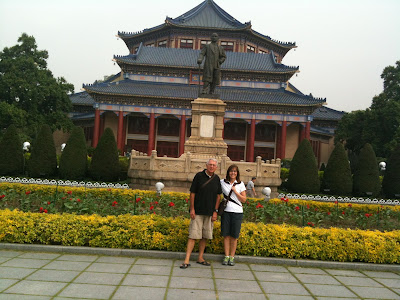This week I had a student ask me to proofread his
resume. He is getting ready to take the
GRE to be admitted to graduate school in the US, he is hopeful North
Carolina. He is in our Master’s Program
working towards his Master’s of Chemical Engineering and diligently working to
polish his 13 years of English study.
Very bright student has done very well in school academically; he has
taken very difficult classes and is at the top of his class. He still has to take the TOFEL for admittance
into an English-speaking program and of course get a high score on the
GRE.
The part of his resume that caused me to pause was his extra
curricular/ leadership section. He has
been active in school leadership opportunities from the beginning of his
freshman year straight through his Master’s Program. At least a half dozen leadership entries were
student leadership positions within the student Communist Party chapter on
campus. I know students on campuses
across the United States participate politically on many different levels from
Young Democrats and Young Republicans all the way to government internships so
political activity was not the questions at all. I have worked with students for all most two
months and it never really occurred to me that they are all most likely
Communist Party participants. Students who are successful in China are in fact
members and leaders in the Communist Party.
We had an interesting conversation as I suggested to him if he was
planning to go to the United States he might not want to list his Communist
Party activities on his resume; possibly a change to campus student leadership
positions might be better received in the United States. He seemed puzzled and
somewhat defensive in his explanation of pride in his ability to be recognized
by the Communist Party.
He enlightened me about Guangzhou and the role it had played
in the Cultural Revolution and the implementation of the Communist Party in
China. His family has been involved for
generations. He caused me to do some
research and spend time visiting the local sights commemorating events in Chinese history.
The Guangzhou Uprising of 1927 was a failed Communist uprising in the
city of Guangzhou
in southern China.
On
December 11, 1927, Red Guard
citizens, directed by Communist political leaders, took over Guangzhou (then known as
Canton in English). The uprising occurred despite the strong objections of
Communist military commanders such as Ye Ting, Ye Jianying and Xu Xiangqian. Using the
element of surprise, rebel forces took over most of the city within hours,
despite a huge numerical and technical advantage held by government troops. The
Communist leaders officially renamed the city's political structure
"Guangzhou Soviet". However, warlord armies quickly crushed the
uprising. Zhang Tailei,
the leading Red Guard organizer, was killed in an ambush as he returned from a
meeting. The takeover dissolved by the early morning of December 13, 1927.
In the
resulting purges, many young Communists were killed, and the Guangzhou Soviet became
known as the "Guangzhou Commune" or "Paris Commune of the
East"; it lasted only a short time at the cost of more than 5,000
Communists dead and an equal number missing. Ye Ting, the military
commander, was scapegoated, purged and blamed for the failure, despite the fact
that the obvious disadvantage of the Communist force was the main cause of the
defeat, as Ye Ting and other military commanders had correctly pointed out.
Enraged by his unjustified treatment, Ye Ting left China and went into exile
in Europe, not returning
until nearly a decade later.
The
Japanese entered Guangzhou, then Canton, on Friday, October 12, 1938 and occupied Guangzhou
until the end of World War II. There are
many memorials around the city so we took the time to visit those Chinese
memorials to better understand student’s background and political
understanding.
The Sun Yat-sen Memorial Hall sits in the city center. The huge auditorium is an amazing, dark walnut stage with a huge balcony, leaded glass windows with stained glass in the upper levels. Interestingly enough the soft padded chairs are red velvet on red carpet. The auditorium is still used today for social and political events. The statue out front is the same mold that sits in front of the SCUT Administration building where we teach every day.
Martyr's Park is where the young Red Guard gathered to fight knowing they were outnumbered but remained committed to their cause. There is a large mound dedicated to the mass grave where they were all buried together. Yes, that is a very large a hand wrapped around an even larger rifle.
Peasant Movement Park is largely housing and training buildings with cafeteria accommodations in a huge halls. This is a training registration room with furniture used at the time. The housing is tightly crammed with wooden bunk beds, four beds to a set, barely room to stand up between.
This whole piece was enlightening and very interesting to contemplate what we are all about here in China. I have spent considerable time reflecting about my students and my role in their progression to support them in reaching their goals. There is an emptiness about my students, they seem alone, lonely and struggling to make sense of their lives. They are each in intense competition with their classmates to be the best, get the best grades, get into the best schools, get the best job and ultimately have the most power. I am watching more carefully their interactions and presentation. I love being in a place that makes me think, I love being challenged to determine who I am and what things are important to me. I love deeply my family, who they are and what they are about. They are amazing, all 20 of them.



No comments:
Post a Comment